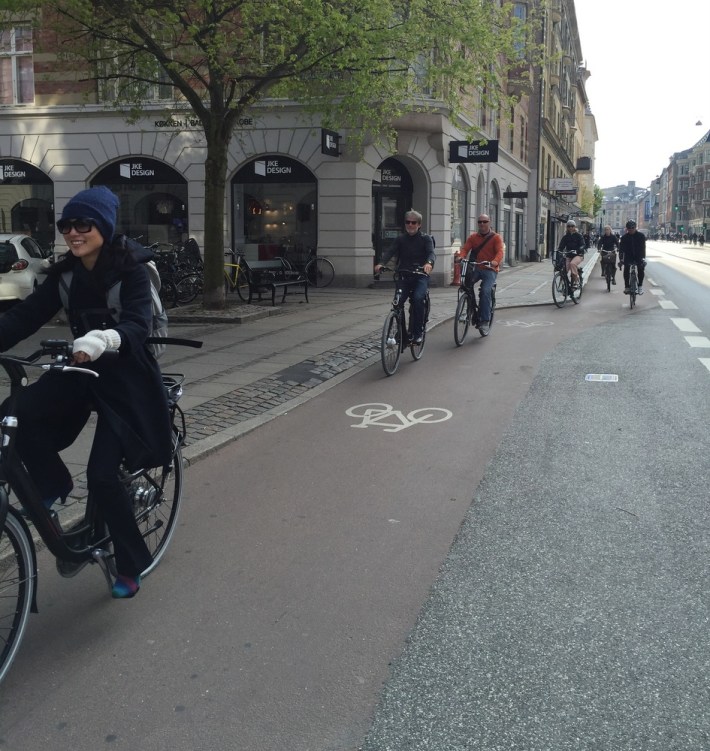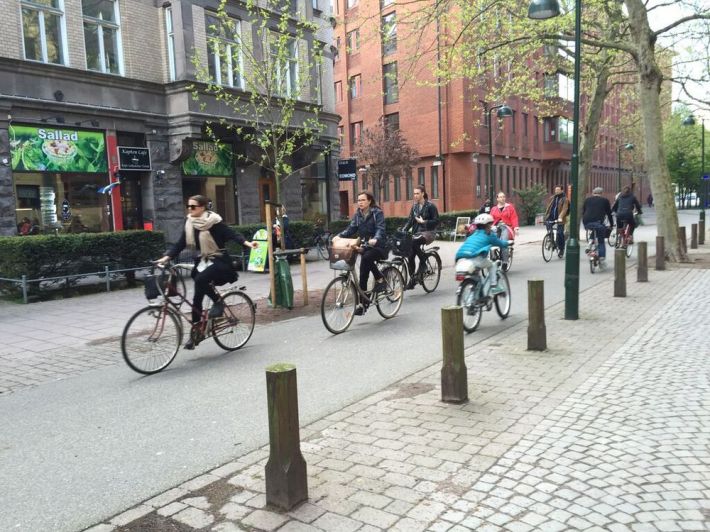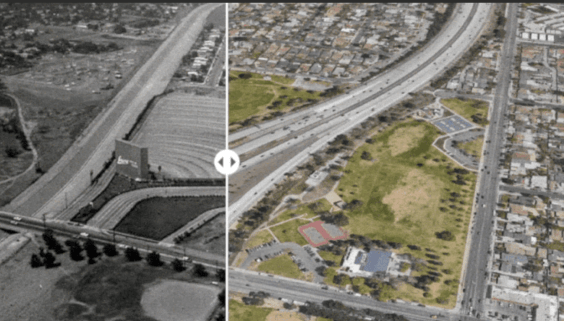
Supervisor Jane Kim and SFMTA officials took a trip last month to learn about best practices from two leading bike-friendly cities: Copenhagen, Denmark, and Malmö, Sweden.
"I'd assumed that [Copenhagen] always had a bike culture," Kim told Streetsblog. "I was surprised to learn that they also had a cars-first culture through the 60s and 90s. They've actually spent the last 25 years working to shift that."
Kim joined a delegation including SFMTA Chief of Staff Alicia John-Baptiste, Communications Director Candace Sue, Livable Streets planner Mike Sallaberry, and board member Gwyneth Borden. The trip was organized by the national advocacy group People For Bikes.
"Not only are senior citizens getting around in a healthier way," noted Kim, "they feel safe doing it. And that's exciting."
The delegation met with Copenhagen planning officials and a former mayor to learn about how the city made bicycling the most convenient way to get around.

Copenhagen has one of the world's highest rates of bicycling, and growing. According to the city's 2014 Bicycle Account [PDF], about 30 percent of all trips that start and/or end within the city are made by bike. Among trips to work and school start and end within the city, 63 percent are by bike, and that figure increased from 52 percent in 2012.
"The average person uses a bike to get around," said Sallaberry. "If you ask a person, 'are you a cyclist?,' they'll just look at you kind of strangely. It'd be like asking if you brush your teeth. Well yeah, of course."
The streets are also some of the world's safest. Sallaberry estimated that if SF were as safe as Copenhagen, the city would save about 15 lives every year. Copenhagen has cut traffic fatalities and serious injuries by 70 percent over the past 20 years, he said.
Even with ten times the bicycling rate of SF, Copenhagen has had fewer than four bicycle fatalities each year since 2009, with only one each year in 2011 and 2012, according to StatBank Denmark. The average person could cycle 2,800 years in Copenhagen before having a collision, statistically speaking, according to Copenhagen's Bicycle Account.
"We spend so much time and money cleaning up the aftermath of traffic fatalities here," said SFMTA Sustainable Streets Director Tom Maguire. "A trip like this, to send a few people who are in a position to effect change to see with their own eyes a city like Copenhagen, to me, it's a no-brainer. It's such a great investment -- it's inspiring."
SF's bike lanes are typically unprotected and end suddenly, unlike Copenhagen's, which are usually physically separated, often by a raised curb, and reliably link to safe routes.
Our 2010 Streetfilm, "Cycling Copenhagen, Through North American Eyes"
"They acknowledge that bikes are not cars, and they're not pedestrians," said Sallaberry. "It only makes sense to have intuitive and continuous networks for them. We have continuous sidewalks, but you wouldn't drop a sidewalk and expect pedestrians to walk in the roadway,"
"With some really good investment and policy changes, we can get there," said Kim. "We're probably 15 years behind them -- that's a rough guess."
SF plans to break ground on its first raised bike lanes on Masonic Avenue this year, with Second Street and part of Polk Street to follow next year. But since this type of infrastructure is new to U.S. cities, the SFMTA will install one-block "demonstrations" this year to test it out on Market Street (at 12th Street) and Valencia Street south of Cesar Chavez Street.
Those projects will test what types of curbs work best, Sallaberry said, especially in allowing people with disabilities to reach the curb from vehicles. "Before we build miles and miles, we want to do these smaller projects to determine what standard we should use."
Sue, the SFMTA's communications director, said the most important lesson she learned in Copenhagen was about "asking the right questions and creating solutions that work for real people... rather than coming up with prescriptive approaches."
Sue noted that Copenhagen's transportation planners approach street design from a philosophy of "observing what people are doing," then testing solutions tailored to the safest and most intuitive behavior. "People will do what makes the most sense to them."
"Traditionally, we've tried too hard to regulate human nature," said Sallaberry. "Of course we need rules and laws. But if large numbers of people are breaking a law, then that's saying something. We need to at least understand why they're doing what they're doing."
"If you provide a system that makes sense, and serves people well, they're more likely to follow the law and be predictable."
SF officials have taken several trips in recent years to study bike-friendly cities, and Dutch planners visited SF in 2011 to help design major bicycling streets. After a trip to the Netherlands that year, then-Supervisor David Chiu proclaimed that SF needed to "stop crawling and start running" in creating a bike-friendly city.
But when it comes to removing car parking, which occupies most of SF's curb space, it takes political leadership from elected officials to stand up for protected bike lanes. When SFMTA proposed applying Dutch-recommended protected lanes on Polk, Chiu yielded to car-first merchants and endorsed a heavily watered-down project.
Kim said an important lesson for her was that Copenhagen presents bike-friendly streets "within a larger vision of the city."
"It's not just about bikes," said Kim. "It's all interconnected -- that was really helpful for me."





